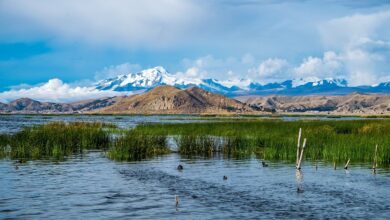World Water Day: What is the Situation in Latin America?
Within the framework of World Water Day, we analyze its situation in Latin America, a vital issue for the future of the region.

Photo: Unsplash
LatinAmerican Post | María Fernanda Ramírez Ramos
Escucha este artículo
Leer en español: Día Mundial del Agua: ¿Cuál es la situación en América Latina?
Latin America is a region rich in natural resources, seven countries (Mexico, Brazil, Colombia, Peru, Bolivia, Ecuador and Venezuela) are considered megadiverse countries, largely due to the availability of water. However, the care of the vital liquid and its availability among the population continue to be a challenge for the region, which is why it is essential to reflect on the issue in the framework of March 22, World Water Day.
The problems around the water
Water is a vital support for biodiversity, animal and plant species depend on it, but also productive activities and the population itself. In Latin America the two main problems around water are pollution and global warming . Pollution directly impacts the health of the population, whether directly or not, as it can also affect farmland, for example. The mines located mainly in Mexico, Chile and Peru are responsible for affecting fresh water in these countries.
On the other hand, global warming affects the availability of water in the region, despite being one of the areas with the largest number of freshwater sources, their distribution is not necessarily balanced. Much of the fresh water in South America is related to the Amazon, or to glaciers. For example, Chile has 80% of the glaciers in Latin America, access to drinking water in large Chilean cities depends on them, according to information from the Government of Chile. Global warming has directly affected the glaciers, which year after year melt rapidly, causing a growing scarcity of water. Also, in countries like Mexico, which has one of the largest cities in the world, water scarcity causes overexploitation of aquifers.
The demand for water and the supply continue to be uneven, a population with health problems, a deteriorated environment and the affected economic activities also generate a national security problem, which of course implies a geopolitical issue. The integration of these needs as fundamental rights is already part of different legislations, but there is still work to be done on issues such as international cooperation in relation to water issues and compliance with global agreements on it.
You can also read: Do you know how to properly dispose of your electronic waste?
What are the objectives of Latin America on the issue of water?
In this sense, World Water Day is pertinent as an axis to raise awareness among the population, governments and companies to make responsible use of water and improve public policies around it. The so-called "Governance of water" is precisely this capacity of public institutions to create the legal framework that allows the protection of water and everything that surrounds it to make it sustainable in the long term.
The role of the region in the global context has focused on joining the UN Sustainable Development Goals, specifically goal number 6, which calls on countries to generate the conditions to give access to water to millions of people who do not They do not have water on a regular basis, neither of an acceptable quality nor at a fair cost. It also focuses on environmental protection as the main axis and the creation of programs to treat, capture, desalinate water and apply technologies that allow efficient use of available water resources. ECLAC also points in the same direction, especially when access to liquid is less in the population with fewer resources, as well as of poor quality, for which justice is important around the distribution of water, of the same quality and price.
Latin America in the global context of water
At the geopolitical level, water is increasingly at the top of the international agenda. The indiscriminate use of water, its contamination and the high cost of continuing to carry it to large cities have made those countries with greater availability of the liquid become strategic. Thus, Latin America is in the center of attention as far as water is concerned, according to ECLAC it has a third of the world's runoff.
This generates a greater responsibility for Latin America, considered one of the lungs of the world, which must protect resources, while at the same time using them sustainably for the benefit of the population. The reality is still far from it, 166 million people lack water coverage, according to ECLAC data, this is equivalent to 25% of the region's population, which is 660 million inhabitants. Threats such as global warming, overexploitation, pollution, privatization, monopolization and high costs for the population are the great challenges for the region as a whole.




